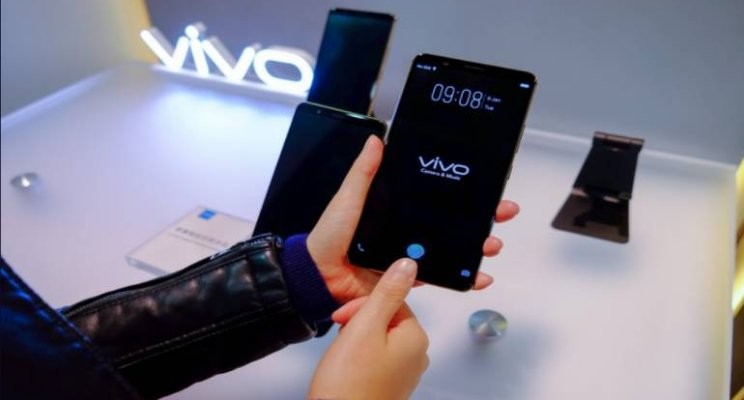
In-Display Fingerprint Sensors Are Here
At CES 2018, which took place January 9–12 in Las Vegas, Chinese technology company Vivo unveiled the first smartphone with an in-display fingerprint sensor: the Vivo X20 Plus UD, a result of a collaboration between Vivo and California-based developer of touchpads and sensors Synaptics.Brief History of In-Display Fingerprint Sensors
In-display fingerprint sensors have been in the making for many years. Synaptics first debuted a fingerprint sensor capable of scanning through display glass, the Natural ID FS9100, in late 2016, and many have expected the sensor to appear in a smartphone from Apple or Samsung in 2017. Synaptics VP of marketing Anthony Gioeli said in a press release, “Synaptics’ FS9100 family of fingerprint sensors represent a new breed of optical fingerprint sensor technology that is designed to meet the needs of mobile devices, including the ability to image through thick 2.5D glass. In addition to opening the door to new industrial design options, it enables OEMs to provide highly durable, button-free cover glass and more easily provide water-resistant products while eliminating low yield glass processing.” But contrary to the expectations of many, in September 2017, Apple software engineering chief Craig Federighi said in an interview that the Apple sees Face ID as the future of biometric authentication and wants to move away from Touch ID and other possible forms of fingerprint-based authentication. Because the Samsung Galaxy S8, which was released in April 2017, also featured a camera-based authentication mechanism, an iris scanner, it seemed for a while that the time of fingerprint sensors has passed. That changed in December 2017 with Synaptics’ announcement which stated that the company had begun mass production with a top five OEM of its new Clear ID FS9500 family of optical in-display fingerprint sensors. “Designed for smartphones with infinity displays, Synaptics’ Clear ID in-display fingerprint sensors magically activate in the display only when needed. Clear ID is faster than alternative biometrics such as 3D facial, highly-secure with SentryPoint technology, and very convenient with one-touch/one-step biometric authentication directly in the touchscreen display area of smartphones.” While Synaptics did not specify which smartphone manufacturers they were working with, the most likely suspects were Samsung, Oppo, Vivo, and Huawei, and we now know that Vivo was definitely among them. Vivo X20 Plus UD Apart from its innovative fingerprint reader, the Vivo X20 Plus UD is not radically different from other high-end Android smartphones. It features a 6.43-inch 2160 x 1080 18:9 OLED display, which is a prerequisite for the FS9500 optical in-display fingerprint sensor to work. The smartphone also has a Qualcomm Snapdragon 660 processor with 4 GB of RAM, dual 12-megapixel cameras, and a 3,905mAh battery. The Vivo X20 Plus UD is currently available only for the Chinese market. From the user’s perspective, the in-display fingerprint sensor that’s completely hidden underneath the OLED display works just like a regular capacitive fingerprint sensor. “The mechanics of setting up your fingerprint on the phone and then using it to unlock the device and do things like authenticate payments are the same as with a traditional fingerprint sensor,” commented Vlad Savov for The Verge. “The only difference I experienced was that the Vivo handset was slower — both to learn the contours of my fingerprint and to unlock once I put my thumb on the on-screen fingerprint prompt—but not so much as to be problematic.”How In-Display Fingerprint Sensors work?
Unlike capacitive fingerprint sensors, which generate an image of the ridges and valleys that make up a fingerprint using electrical current, optical fingerprint sensors, like the FS9500 optical in-display fingerprint sensor from Synaptics, use light to capture an image of a fingerprint. The captured image is then analyzed by an advanced artificial intelligence fingerprint recognition algorithm trained to recognize over 300 distinctive characteristics of fingerprints. In a press release from December 12, 2017, Synaptics boasts that the FS9500 sensor comes with several unique and highly secure authentication features, including Quantum Matcher for adaptive fingerprint template matching and authentication, PurePrint to distinguish between spoofs and actual fingers, and SecureLink to combine support for TLS protocol with ECC authentication and AES encryption.Expect Smartphones with In-Display Fingerprint Sensors
“Consumers prefer fingerprint authentication on the front of the phone, and with the industry quickly shifting to bezel-free OLED infinity displays, the natural placement of the fingerprint sensor is in the display itself,” said Kevin Barber, senior vice president and general manager, Mobile Division, Synaptics. Even though the Samsung Galaxy S9 won’t likely feature an in-display fingerprint sensor, a patent filed by the company was recently spotted by TechTastic, showing a handset with a fingerprint scanner built into the display. This means that the Samsung Galaxy Note 9, or some other future smartphone from Samsung, will likely come with an in-display fingerprint sensor, and other smartphone manufacturers are going to follow suit.Comments
Tags: biometric, fingerprint, iot, mobile, mobile app, mobile application development
Trackback from your site.